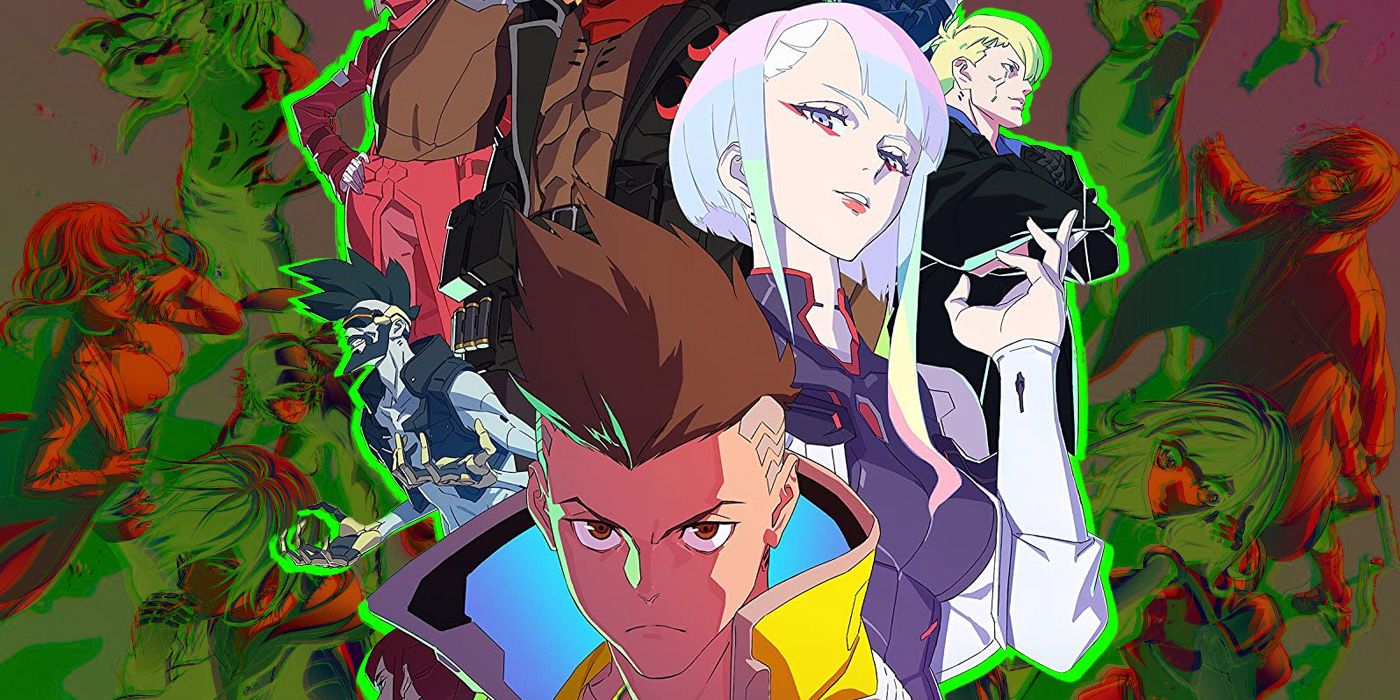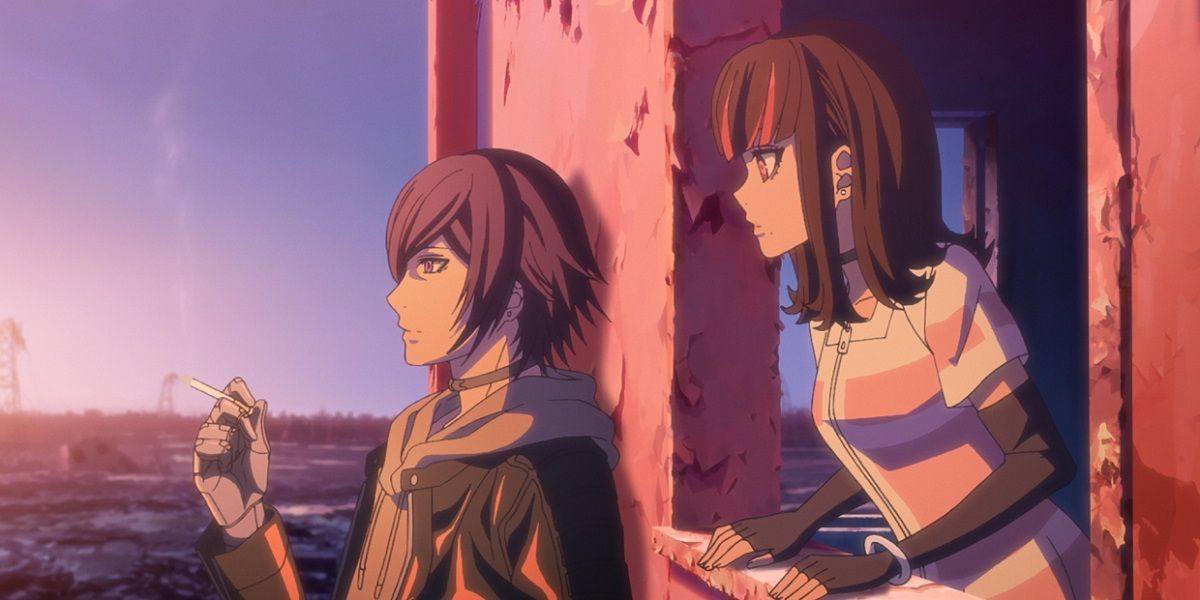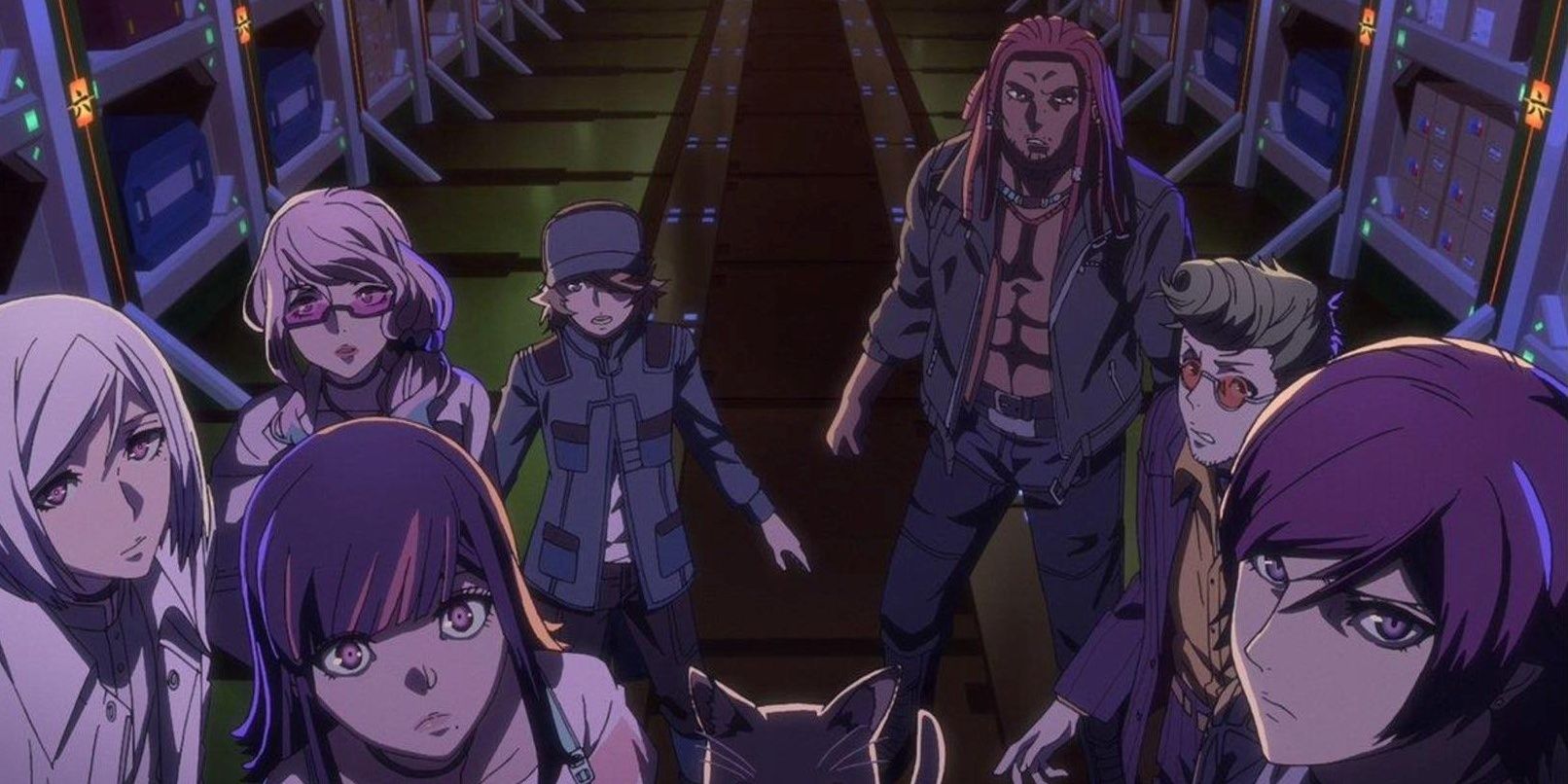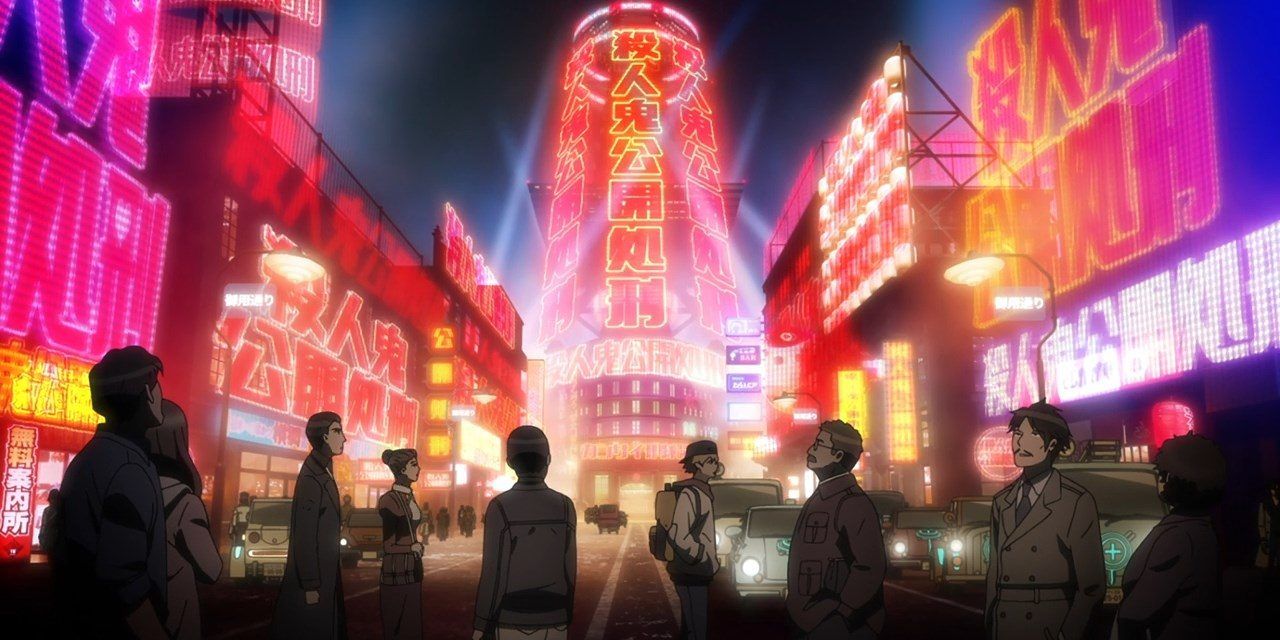There is no dearth of anime when it comes to the cyberpunk genre. From classic films and series such as Akira and Ghost in the Shell as well as 'post-Evangelion' titles like Serial Experiments Lain and Texhnolyze, to more recent offerings -- including the fan-favorite Psycho-Pass -- cyberpunk anime has something for everyone. Now, Studio Trigger’s Cyberpunk: Edgerunners makes a more than worthy addition to that list.
However, despite Edgerunner’s massive popularity and obvious high caliber, both in terms of production and storytelling, another relatively recent cyberpunk show tops the former in several important ways: 2020’s Akudama Drive. An anime-original series produced by Pierrot, the story is set in a dystopian Kansai and follows the misadventures of a young woman who finds herself inadvertently caught between several deadly "Akudama" criminals and an equally brutal special police force.
Akudama Drive's Pacing Incorporates Both Peaks and Valleys
Like many cyberpunk titles, which commonly take place in futuristic dystopian settings, Akudama Drive involves intense action and plentiful violence -- enough in this case that the televised version needed to be censored in several instances. However, while both Edgerunners and Akudama depict enough high-octane fight scenes to satisfy just about any viewer on the lookout for blood-pumping (and blood-spilling) action, the latter also features a few contemplative lulls throughout its runtime.
These pauses are where viewers get to take a breath and enjoy the anime’s emotional impact, not only its delightfully over-the-top brawl scenes and unashamed carnage. Akudama Drive may be a popcorn show in many ways, but that doesn’t mean it’s without heart -- far from it. Audience members come to genuinely care for its characters and are invested in the choices they make, not just if and how they come to a violent end. This makes the dips in action incredibly important, as they allow viewers to form stronger connections with the characters and their various journeys.
All the Characters Get Significant Screen Time
Cyberpunk: Edgerunners and Akudama Drive are both anime with sizeable and well-rounded casts. The former is made up of a group of black-market mercenaries, while Akudama likewise follows a group of criminals -- some more dangerous than their appearances alone might suggest and others, like Swindler and Hoodlum, faking their deadly skills out of necessity. Despite all being unnamed, known only by their various professional monikers (Doctor, Hacker, Brawler, etc.), these characters are given enough room to take the spotlight from time to time.
This means that although Swindler is the main protagonist and arguably the most sympathetic of the group, viewers can still cheer for the other characters because they genuinely get a chance to know them. Many of their personalities, while intentionally and cartoonishly overblown, have great audience appeal because apart from their sheer entertainment value, the cast is given the needed time and space to exist beyond their immediate mission. This presents a sharp contrast to the likes of Edgerunners’ Maine, Dorio, Kiwi or Falco, whose backstories, motivations and day-to-day lives are never explored and who seem to have no real lives outside of their association with main protagonists David and Lucy.
Its Background Visuals Are Second to None
Last but certainly not least is Akudama Drive’s artwork -- more specifically, its background visuals. Granted, it’s undeniable that Cyberpunk: Edgerunners looks amazing, especially with Trigger’s trademark dynamic art style and a budget obviously large enough for the studio to bring its A-game. It’s also difficult to directly compare Edgerunners with Akudama in this context, as the two series’ have markedly different aesthetic approaches. However, where Akudama does win out is through its stunning background art, reimagining a far-flung future that’s nonetheless immediately familiar to anyone who’s ever walked the glittering nighttime streets of downtown Osaka.
Vibrant and detailed, the show paints a unique picture of how Kansai society functions with barely a word needing to be spoken. In other words, the series doesn’t just look impressive -- even during its "downtime" when the action is put on pause for a beat -- but also achieves significant worldbuilding while negating the need for cumbersome dialogue or info-dumping. The corporate-controlled Night City of Edgerunners, based on real-life Northern California, likewise makes for an intriguing viewer experience, but as far as the more intricate details and panning cityscape shots are concerned, Akudama Drive takes the win.
Cyberpunk: Edgerunners has become a smash-hit, and for good reason, attracting legions of fans of the Cyberpunk 2077 game on which it’s based as well as viewers brand-new to the franchise. However, this is not the be-all and end-all of the cyberpunk genre even when it comes to newer anime; audiences seeking laudable pacing, well-balanced characterization, fantastic visuals and a surprising amount of emotional gravitas need look no further than Akudama Drive.




